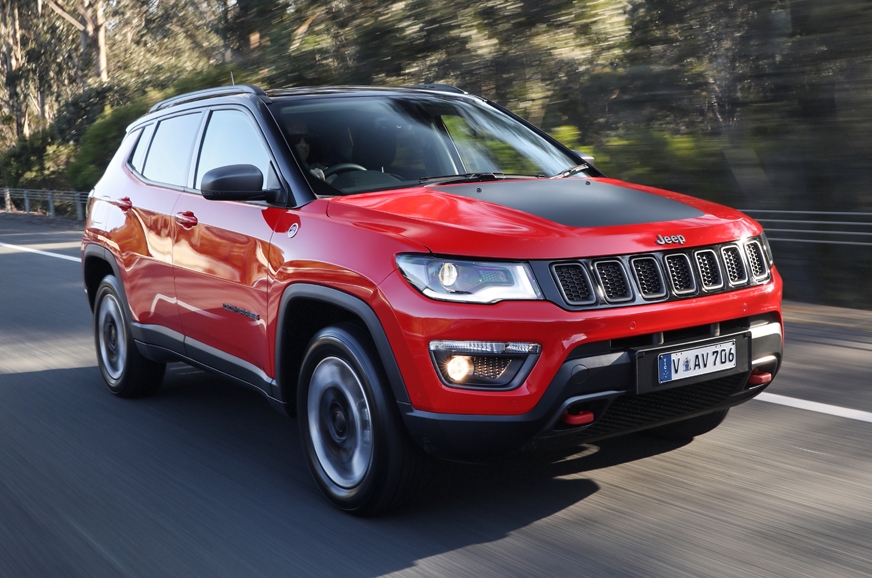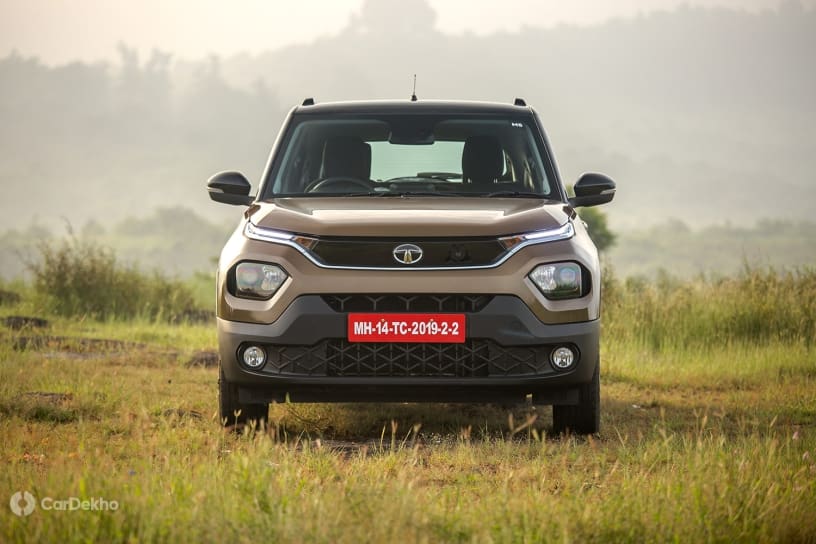
What is it?
There’s an adventurer inside every one of us. For some, this may mean switching on National Geographic, while there are those who prefer to put on their hiking boots and head out for adrenaline-pumping thrills, and the Trailhawk is this kind of on an adventurer. Every model that Jeep builds must have a Trail Rated or Trailhawk (as they are called) version; one that displays better off-road ability than the regular model and comes out on top in tests in five specific areas – traction, water fording, manoeuvrability, articulation and ground clearance. Jeeps are pretty handy off-road, but for the Trailhawks to earn their wings, the cars get modifications like higher ground clearance, low-range 4×4 gearboxes and additional skid plates.
The Compass Trailhawk comes with Jeep’s Active Drive Low 4×4 system, which is basically a system with a low range and a ratio of 20:1, a rear locking differential and an additional Rock setting on Jeep’s Selec Terrain system. It also gets hill descent control as standard. Ride height has been cranked up a further 20mm and the car gets differently profiled front and rear bumpers, giving it better approach and departure angles that stand at 30.3 degrees (approach), 24.4 degrees (breakover) and 33.6 degrees (departure). The regular Compass Limited variants measurements stand at 16.8, 22.9 and 31.7 respectively. The Compass Trailhawk also gets underside skid plates, all-season tyres and all-weather floor mats too.
Of course, the Trailhawk isn’t just a mountain-dwelling creature and it lives among us in the city too. And to remind us of its true nature, it also has the signature red recovery hooks, a black anti-glare bonnet decal, unique alloy wheels and the Trailhawk and Trail Rated badging.
What’s it like on the outside?
For the uninitiated, this might just be a regular Compass, but for those even slightly inclined towards anything automotive, it will be no tough task to tell this variant apart. The black bonnet decal, the red tow hooks and the badging are the right amount of deco to set it apart and give it that butch off-road appeal. Sure, some might still want more, like massive cladding all around, a winch to bolt onto the bumper, jerry cans for the body, perhaps a ladder over its tailgate, and even massive fog lamps sprouting from the roof. This would not only scream off-road but also take it from being an adventurer to, well, Bear Grylls. But bearing in mind this Compass will live in the city too, it’s best left where it’s at.
What’s it like on the inside?
Trailhawk versions come with interiors trim and spec differences as well. The car we drove had Trailhawk logos embroidered on the seats, red trim bits around the cabin and an 8.4-inch touchscreen system; the current variants in India get a 5.0 or a 7.0-inch screen. The Trailhawk specifications for India are still not known, however, it will get additional buttons on the four-wheel-drive selector to select four-wheel-drive low, hill descent and the Rock mode setting too.
The rest of it is similar to the regular Compass, and that is a good thing. At first glance, the insides do appear plain, but as you look and poke around you’ll see that it has a quality feel to it, thanks to the generous helpings of soft-touch materials, the beautifully stitched seats and the well-damped switches. Space on the inside is the same; so, while the front is just fine, the rear still isn’t class leading and sitting three abreast will be uncomfortable. The backrest too may feel upright for some. Boot space stands at 438 litres, and what’s nice is that the SUV gets a full-size spare under the boot floor.
What’s it like to drive?
For our Trailhawk experience, Jeep had chalked out a drive through a Tasmanian forest trail. But between that and our hotel in Hobart, lay about 35km of some excellent paved twisty Australian roads, perfect to check this Jeep’s road manners. I’m happy to report that the Trailhawk behaves pretty much the same, the 20mm ride height increase hasn’t really affected the handling – perhaps a back to back will bring out the differences but, out here on its own, the Trailhawk handled itself really well. Just like the regular Compass, there is body roll but it’s far from sloppy. The steering is nice, direct and well-weighted. Interestingly, the car we drove was an Australian-spec model, made in India, powered by the same 2.0-litre diesel as the one in India. It was, however, mated to a nine-speed automatic transmission that doesn’t blend in with the rest of the car’s sporty character. The torque converter feels like a typical slush ‘box. Put your foot down at low revs, and there is a rise in revs but not a corresponding increase in speed and gear changes are slow to complete. Off-road, however, it works just fine; in fact, compared to a dual-clutch auto, the more fluid shifts of a torque converter make for a smoother drive, and with no clutch plate to damage, it’s probably the better setup to have.
The trail we tackled was basically a rock-strewn path up a mountain, and the Trailhawk simply excelled. Sure, this wasn’t like the legendary Rubicon trail in the US but there were sections challenging enough to stop other SUVs in their tracks, the regular Compass included. We did manage to hit the underside, but thankfully, the additional skid plates did their job well and kept us going, and for most of the trail the four-wheel-lock proved adequate enough with 4-low called on for only certain sections. The crawl ratio of 20:1 made it easy to clamber over the steeper rocks, and it should be pretty handy through muck or sand too. We did encounter a little water on our way, which the Compass dispatched with ease, but this was at a far lower level than what the car is capable of. Along with an increase in ride height, the Trailhawk also has a higher-set air intake giving it a 480mm water-wading depth; for reference, the regular Compass has a wading depth of 405 mm. The ride off-road is also great, and the suspension does a great job of absorbing all the ruts and bumps, and given the nature of the trail, speed was slow and steady. All in all, the off-road prowess will make sure you enjoy your adventures or drive easy over BMC’s finest.
Should I buy one?
Jeep hasn’t confirmed any launch date or specifications for the Trailhawk in India, but expect it this year itself at the top of the Compass range, priced at around Rs 24 lakh mark. It would be the only SUV in the segment to have such a sharp off-road focus and that alone will make it a must buy for off-road junkies. However, it still remains as usable as a regular Compass, and if Jeep does kit it out with additional bits, like powered seats, for example, it could be an option for even the regular SUV prospect. Then there’s the likely powertrain combo. Currently, the diesel misses out on an auto gearbox and the Trailhawk’s likely diesel-auto combination could prove to be a draw. Thus, as things stand, the Trailhawk could be a great option for both, the adventure seeker and the armchair enthusiast too.
[“Source-autocarindia”]















